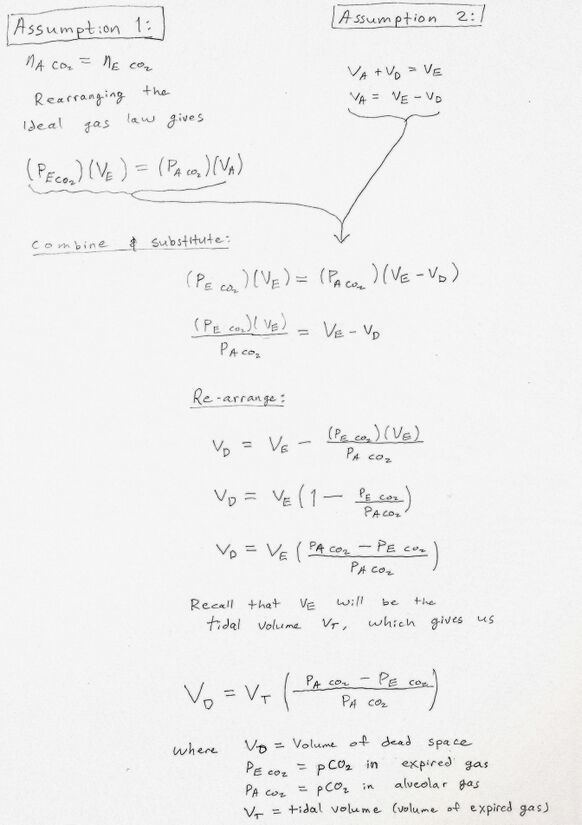Dead space and its measurement
Dead space is the volume of ventilated air that does not participate in gas exchange.
Anatomical dead space is the volume of air that fills the conducting zone, about 150 mL (~30% of normal tidal volume). It is measured by the nitrogen washout (Fowler) technique:
- Subject breathes in pure O2
- Most of the O2 mixes with the air already in the alveoli (75% N2)
- The gas in the anatomical dead space remains as pure O2 because it remains up in the conducting zone
- When the gas is expired, the pure O2 is expired first. This volume is equal to the dead space. Note that in practice, O2 is replaced by N2 more gradually, as a sigmoid curve. However, it is quick enough that it can be approximated (averaged out) as an abrupt transition.
Alveolar dead space includes those parts of the respiratory zone that do not participate in gas exchange. In the ideal healthy adult, this is zero.
Physiological dead space is the sum of the anatomical dead space and the alveolar dead space. It is found using the Bohr method. The subject breathes in normal room air, and respiration (production of CO2) happens everywhere, except in the volume occupied by the dead spaces. One can assume that
- The molar amount of CO2 produced in the alveoli (nA CO2) will be the same amount that is expired (nE CO2)
- The volume of the alveoli (VA) that participated in gas exchange, together with the physiological dead space (VD), will equal the volume of the expired air: VA+VD=VE
We can apply these assumptions to the ideal gas law (PV = nRT) to derive an equation for the physiological dead space:
References[edit | edit source]
Boron, W. and Boulpaep, E., 2017. Medical physiology. 3rd ed. Philadelphia: Elsevier, pp.677-679.
Costanzo, L., 2019. Physiology - Board Review Series. 7th ed. Philadelphia: Wolters Kluwer, p.116.

